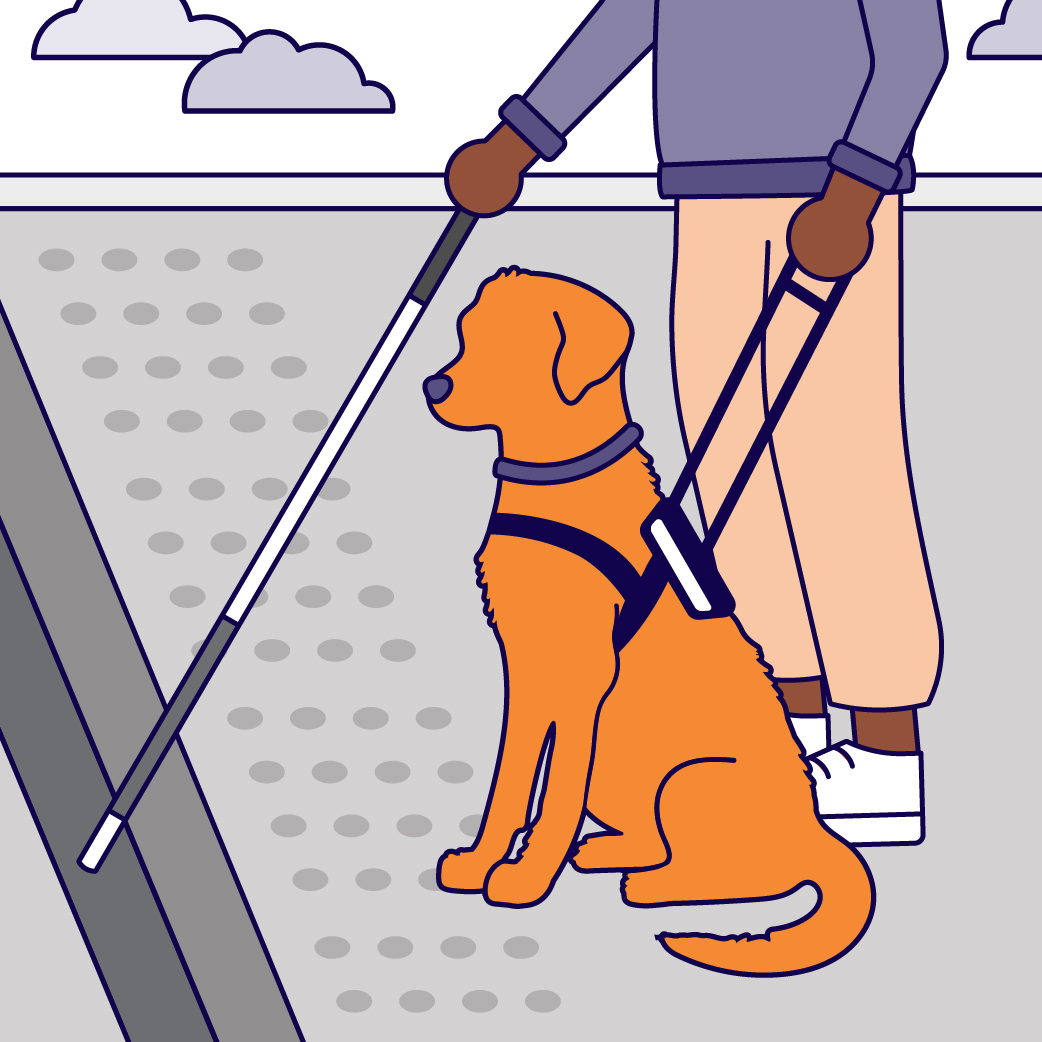Assistance dogs can do some amazing things.

For example, they can support blind people to navigate a city and public transport.
They can notice when someone is about to have a panic attack, before that person even realises it. Some studies show that dogs can even smell cancer – which, while not an assistance dog task, is still incredible. But how do trainers work with dogs to help them learn these complex tasks?
The term ‘assistance dog’ includes any dog that has been trained to support someone with their disability.
For example, guide dogs, therapy dogs, emotional support dogs and many more.
We take a deep dive into the world of assistance dog training.
How are dogs trained?
There are 3 dog training techniques that people can use to teach dogs skills. They are:
- luring – where a dog follows a treat inside a closed hand
- catching – where a dog is rewarded the moment they display a certain behaviour. This technique takes a lot of patience and readiness but can be used to teach dogs to sneeze or bark on command.
- shaping – where a complex skill is broken down into small actions, to make sure the dog can perform each step consistently before raising the criteria they need to get a reward. This technique can use both catching and luring techniques to teach a complex skill.
You can watch a video of someone demonstrating these dog training techniques from the Naturally Happy Dogs page on YouTube.
Guide Dog puppies
Guide Dog training begins when dogs are just puppies. Volunteers in the community raise the puppies until they are around one year old, attending regular training sessions until the puppies are old enough to be assessed for Guide Dog training.
Puppies are then assessed thoroughly for their temperament and ability to handle distractions, like food, noise or other animals. Selection criteria is very strict for puppies to enter Guide Dog training. Puppies that don’t meet the criteria can be adopted by the volunteers who raised them.
Our editor, Jennifer, is a Puppy Raiser. You can read about her now graduated puppy, Nara, on our website.
You can also learn about becoming a volunteer Puppy Raiser on the Guide Dogs Australia website.
Guide Dog training
 During the dogs’ intensive training program, professional instructors work to teach them the skills they need to support people.
During the dogs’ intensive training program, professional instructors work to teach them the skills they need to support people.
Training takes place on residential streets, as well as rural and city environments, to get the dogs used to being around a lot of noise and distractions, while staying focused on their task. Handlers might take them to a busy supermarket and watch them carefully for any sign they’re distracted, for example a head tilt or lingering on a particular distraction.
The instructors build up the dog’s skills until they can follow complex verbal commands like:
- find an escalator
- find the way into a building
- find the way out of a building
- find the counter in a shop
- find an empty seat.
It’s very important not to distract or try to touch a guide dog while they are working or in training. The handler and the dog are paying close attention to each other’s body language as they navigate the world together safely, so it’s important not to distract either of them unless there’s a good reason. For example, a dog will stop at the top of a staircase to let the handler find the railing and take the first steps down. Distractions during this careful interaction can be disruptive, and short of being a nuisance, can also be dangerous.
To understand the complexities of the tasks that guide dogs need to learn, you can watch a video of a blind person working with their Guide Dog on YouTube.
How psychiatric assistance dogs work with invisible disabilities
One of the most incredible things assistance dogs can do is recognise when someone is having a medical event. For example, if someone is about to have a seizure, some specially trained assistance dogs can get the owner into a safe position on the ground, fetch medication and even call for help with a button. These dogs are called psychiatric assistance dogs.
But while these techniques might seem like magic to us, as the dog seems to respond to invisible signs – the training actually relies on physical behaviours people display. The first step is to target the human behaviour you want the dog to respond to, which will be different for everyone. For example, if you want the dog to interrupt an anxiety attack, you might film the person in the lead-up to their anxiety attack and find out they usually bite their nails as their emotions start to escalate. Once that human behaviour is established, it’s simply a matter of using shaping, luring and catching techniques to train the dog what to do in response.
You can watch a video of someone talking about psychiatric assistance dogs on the TED Talk website.
Can dogs detect cancer?
Some studies have shown that dogs can smell cancers. Tumours can cause a person to release certain odours in their sweat, urine and breath – which dogs can detect. So far, most studies have centred around lung, breast and prostate cancer.
This might prove to be a valuable and non-invasive tool for cancer diagnosis in the future. You can learn more about this research on the Cancer Council website.


